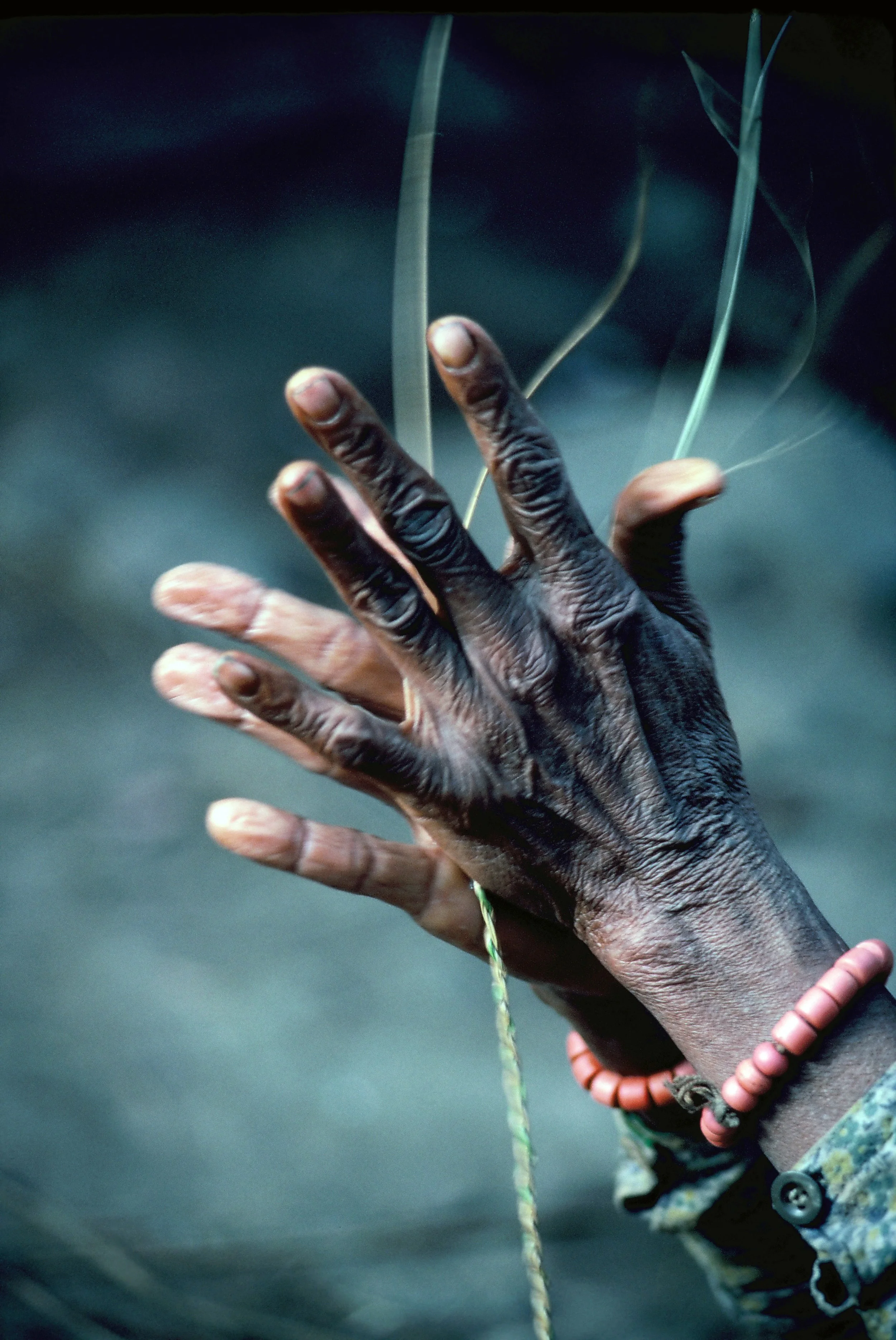The book is now available at https://living-traditions.square.site/ and at Vajra Books and other bookstores in Kathmandu.
Here are some excerpts from the book which complements the collection in the museum. All text and photos by Judith Conant Chase unless otherwise noted.
"I spent 18 years walking throughout the countryside of the mountains and plains and living in the Kathmandu Valley. I followed hints to visit a rare group of people in one place and accepted an invitation to visit a hidden valley in another. It continued to be a great adventure, roaming off for weeks or months. Journeying out with one porter, I often returned with three or four, as I collected smoky wooden milk churns, greatcoats and masks, Tharu baskets and fishing nets and Raute storage boxes. Often I revisited the same area to stay with the same family for a special ceremony or a local pilgrimage. I photographed and documented domestic and ceremonial objects. I studied their ways of manufacture, the ways that they were used in the home, in rituals, in ceremonies. This was the outer view, the outer process. Beyond photos, information and objects, I was allowed a glimpse of other ways of being in this world, ways still intimately connected with place, all ultimately based on a deep connection with the divine nature of all life."
“I am a Nyinba greatcoat, woven of the finest black Tibetan-sheep wool, embellished by the appliqué of hundreds of small strips of bright cotton stitched onto the wool cloth, symbols of sky, mountains, water. The men wind long cummerbunds around my waist. For the most significant of occasions, such as weddings and the spring dance of Mani, I am worn with high embroidered and patch-worked boots. I dance Mani with the men in the fallow fields between the villages, each masked to enact different characters in the story of an ancient king of Tibet. I wear the mask of the jester, of course. In the depths of the canyon a thousand feet below us is hidden the Humla Karnali River. The snow peaks rise even more distant above. I dance, drink, and laugh at the edge of the earth. I hear poignant songs of pilgrimage, about the sweetness of the old days, and of feasts on the rooftops under the mountains and stars.”
Each object is an intimate and essential part of a family, precious and personal, like a close friend or relative, part of a community, ethnic culture, and spiritual tradition. Ritual tools and images, women’s ceremonial ornaments and exceptional vessels, which have been kept in the family for generations, acquire extraordinary energy and are especially revered. Enlivened by years of purposeful action in household and ritual life, objects often develop their own aura. Affection for such precious belongings permeates each home. The objects enhance and distinguish their lives.
For the Newars of the Kathmandu Valley everyday objects are so vital that each one is related to a particular aspect of divine being. During the construction of a new home, the priests conduct a remarkable ceremony which emphasizes the divine nature of each component of the construction from cornerstone to roof top. Within this home, the household utensils, as manifestation of deities, are each called upon to bless the new home.
“The broom is Braahmani, the winnowing basket is Mahesvari, the grindstone is Kaumari and its stone roller, Vaisnavi; the pestle is Varahi, the mortar is Indraanii, the big earthen water pot is Caamunda; the long-necked drinking water vessel is Mahalaksmi.”
In crossing the threshold into a home, we enter a sacred space which every vessel and utensil shares.



